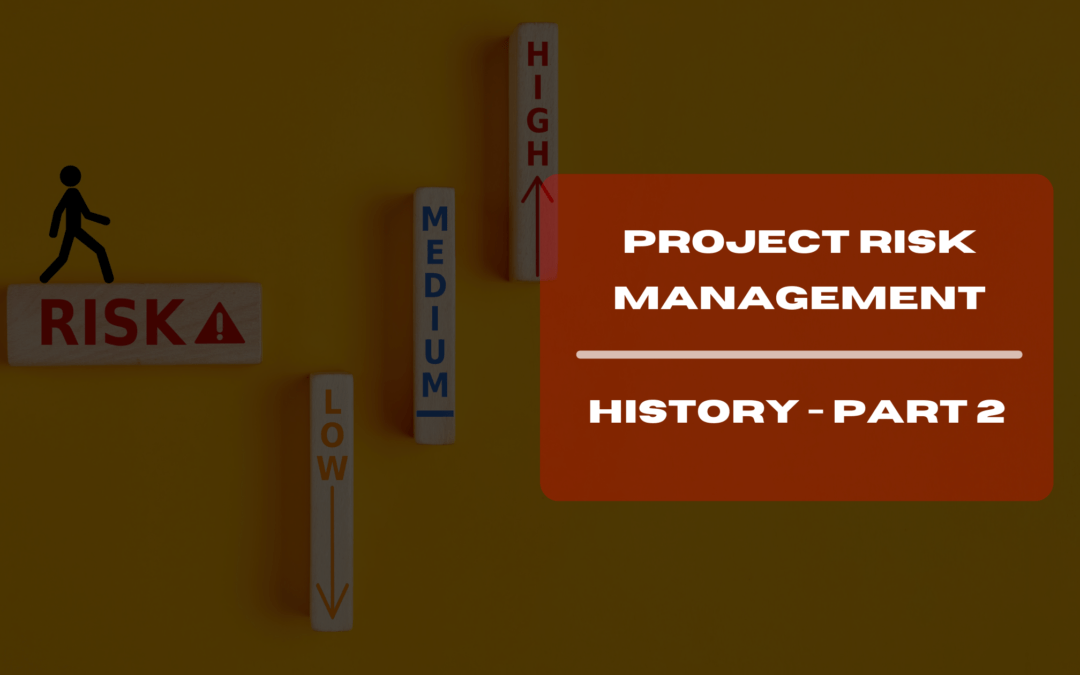A brief history of Project Risk Management: Part 2
In Part 1, we embarked on a journey through time to explore the early origins of project risk management, tracing its roots back to ancient civilizations and the master builders of the Middle Ages. We also touched on how the Renaissance and the Age of Exploration contributed to the evolution of risk management principles.
If you want to refer to Part 1, you can read it here:
The Roots of Project Risk Management: Part 1
Now, as we delve deeper into the annals of history, we confront the challenges that have consistently plagued construction projects and the ingenious ways in which humanity has responded.
Table of Contents
Challenges in Project Risk Management
Construction projects, regardless of the era, have always been fraught with uncertainty. Here are some challenges that have persisted over time:
- Environmental Factors: Nature has often played a significant role in introducing risks to construction projects. Floods, earthquakes, hurricanes, and extreme weather conditions have historically posed a threat to construction sites.
- Labor and Workforce Issues: From the ancient Egyptians dealing with labor disputes to modern construction projects grappling with labor shortages or workforce strikes, managing human resources has been a consistent challenge.
- Materials and Technology: As construction materials and technology evolved, new risks emerged. Early builders faced challenges related to the availability and quality of materials, while modern projects must contend with complex, technologically advanced systems.
- Financial Uncertainty: The cost of construction has always been a critical factor. Historical projects often encountered budget overruns, while today’s projects grapple with financial uncertainties, currency fluctuations, and funding issues.
- Regulatory Compliance: Compliance with building codes and regulations is a modern concern. In earlier times, there may not have been formal codes, but adherence to societal or religious norms was crucial.
Models to Assess Construction Project Risks
As challenges multiplied with the growth of construction projects, so did the need for more systematic methods to assess and manage risks. This led to the development of various models tailored to the construction industry. These models help stakeholders understand, quantify, and mitigate risks. Here are a few noteworthy ones:
- Failure Mode and Effects Analysis (FMEA): Originally developed in the aerospace industry, FMEA has found application in construction. It identifies potential failure modes in a project and assesses their impact and likelihood.
- Monte Carlo Simulation: This statistical technique uses random sampling to analyze the impact of risk and uncertainty in a project. It provides a range of possible outcomes, helping project managers make informed decisions.
- Decision Tree Analysis: Decision trees help visualize decisions and their potential outcomes. In construction, this technique assists in making choices when faced with multiple alternatives and uncertainties.
- Hazard and Operability (HAZOP) Analysis: Commonly used in process industries, HAZOP analysis can identify potential hazards and operational issues in construction projects, particularly those involving complex systems.
Methodologies of Risk Management and Their Evolutionary Significance
The methodologies of risk management in construction have evolved significantly over the years. While early approaches relied on intuition and experience, modern methods incorporate data-driven analysis, advanced technologies, and sophisticated modeling techniques.
Today, methodologies like the Project Management Institute’s (PMI) Project Risk Management Process and the International Organization for Standardization’s (ISO) ISO 31000 provide structured frameworks for identifying, assessing, and managing risks.
The significance of this evolution lies in its ability to enhance decision-making, improve project outcomes, and minimize costly setbacks. It reflects the growing recognition that risk management is not an afterthought but an integral part of successful project management.
In conclusion, the roots of project risk management in construction run deep, extending back through the annals of history. Challenges have persisted, but so too have the ingenious responses of builders and project managers. Models and methodologies have evolved to meet the needs of an ever-changing industry, making risk management an essential discipline in modern construction project management.
As we continue to explore the historical context of risk management in construction, we will uncover even more insights that are seldom considered but hold great relevance for both students and professionals in the field.
In Part 3 of “The Roots of Project Risk Management,” we will delve further into the detailed notes on different models and methodologies of risk management in the construction industry. We’ll explore their practical applications and evolutionary significance.
Stay tuned for the next installment in this series as we continue our journey through the fascinating history of project risk management.

